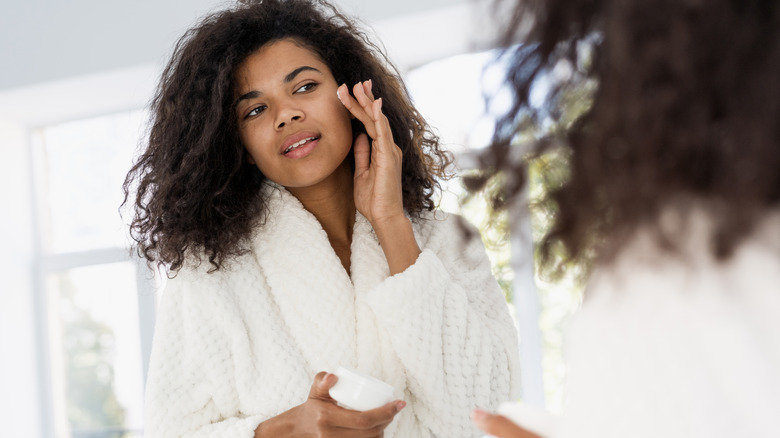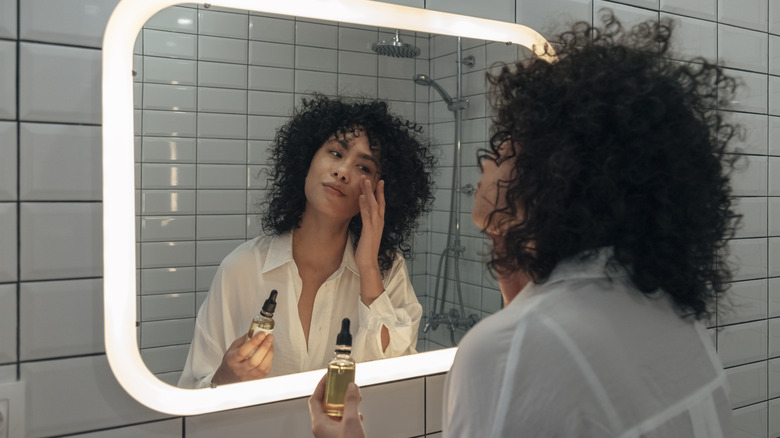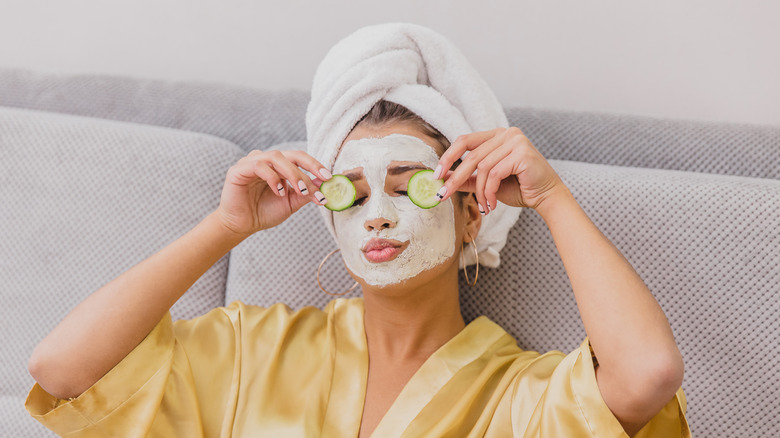Spot Treatments May Not Be The Most Effective Acne Solution - Here's What Is
Since many of us were teenagers, acne has been an ongoing problem we have been trying to combat. From a medical standpoint, acne is defined by the Mayo Clinic as a condition that happens when the hair follicles in your face to become clogged with oil and dirt. This triggers blackheads, whiteheads, and a host of other skin issues. Of course, some people are more acne-prone due to genetics — and even though it's totally normal, advice on how to treat acne constantly varies.
As soon as a new pimple crashes the party, there is this idea that the best way to tackle it is with a spot treatment right away. Spot treatments usually contain salicylic acid, a helpful ingredient for unclogging pores and getting rid of dirt that is on your skin, according to CeraVe. While it isn't the worst thing you can do to tackle breakouts, dermatologists are now discovering that spot treatments are not as effective as originally claimed.
Ditch the spot treatment when treating acne
Spot treatments are super popular, especially in the form of drugstore products, from serums to creams and even patches you can wear overnight. Still, in an interview with Refinery 29, esthetician Sofie Pavitt explained the reason why spot treating is not nearly as effective as you may think due to the cycles our skin goes through on a regular basis.
The idea is that by the time a pimple pops up, it has already been forming over the past 12 weeks. "You might as well treat the whole area, low and slow with benzoyl peroxide 2.5 to 5%," Pavitt said. She added that your best bet is to apply it over any problematic areas, so if you tend to get the most breakouts on your chin, apply the product all over your chin area, as opposed to just focusing on one single zit, for fewer breakouts in the long run.
How to use benzoyl peroxide to treat acne
So, why is benzoyl peroxide such an effective acne treatment? According to the Cleveland Clinic, the ingredient works to decrease inflammation and prevents bacteria growth. Not only does it come in various forms, including creams, gels, and lotions, but it is also completely FDA-approved and available over the counter.
As mentioned above, Sophie Pavitt recommends products containing 2.5 to 5% of benzoyl peroxide. She advises applying it as a face mask, washing it off after a few minutes, and following up with your favorite moisturizer since benzoyl peroxide can have a drying effect.
It is important to note that benzyl peroxide is not suitable for everyone. People who are pregnant, trying to become pregnant, or breastfeeding should absolutely consult their doctor before trying out any product containing benzoyl peroxide. That said, you should also watch out for side effects: skin rashes, hives, or any other signs of an allergic reaction. If you notice any of these symptoms while using the product, stop using it right away.


